Over the course of the week, I attended several panels from different aspects of the space industry: NASA astronauts, engineers, marketers, commercial space companies, etc.
Laura Kearney said something during the Apollo 50: Celebrating the Past to Awaken the Future panel that really stood out to me and connected them all together when she stated, “We don’t reinvent the wheel, we take their lessons and we build on them.” She went on to say that despite the advancements in technologies over the past 50 years since the Apollo missions, “physics doesn’t change” and they find that many of the designs they produced half a century ago are still the best way to go.
Also in the Apollo 50 panel were former astronauts
“Apollo 8 was the breakthrough, not Apollo 11,” according to Griffin. Of course, we all remember 11 for the accomplishment of actually setting foot on another world and returning safely to Earth, but 8 was the first time they actually got there. “I can recall how quiet it got in mission control when he told us we were GO for TLI… That moment, for all intents and purposes, was when the space race ended.” Warden agrees: “Apollo 8 was the most important and riskiest flight we ever flew because there was no redundant system for propulsion.” He too harkened back to the way they built upon the previous missions’ successes (and failures) by giving credit all the way back to the Mercury missions, and also stating, “We would not have done Apollo without the military.”
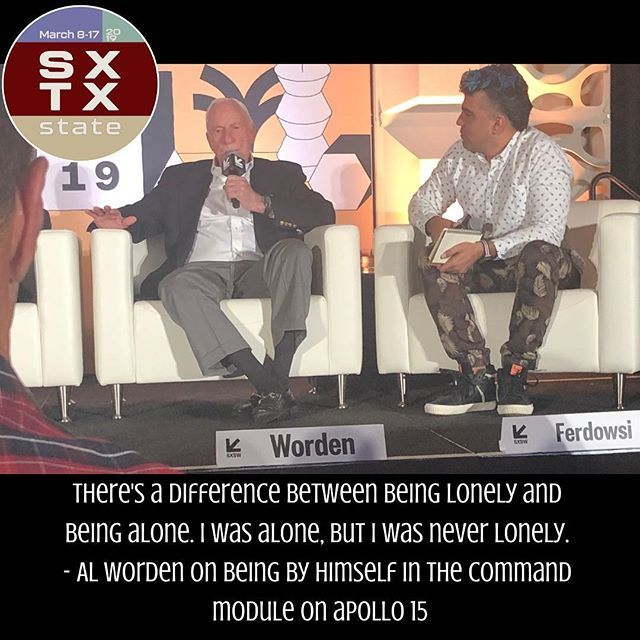
Another common theme between all the panels I attended was that they all believe we are living in an exciting and important time for space travel and exploration. I also sat in on the podcast recording for Austinpreneur: Space Exploration For All, featuring Bill Nye and Richard Garriott, a private astronaut who has actually been to the ISS (and whose father was an astronaut in the Spacelab program. “Not only are we democratising access,” said Garriott, “but the cost of that access is coming down rapidly.” He also dropped the truth bomb that NASA is the #1 employer in the state of Alabama. Who knew?
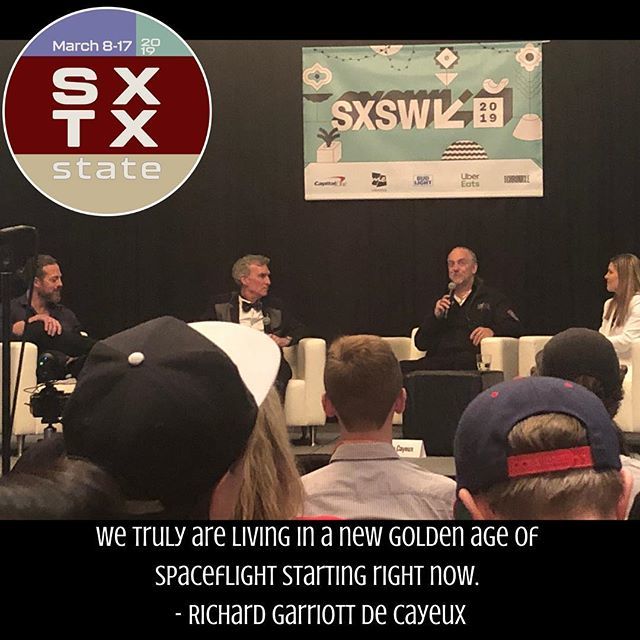
“We truly are living in a new golden age of spaceflight starting right now. “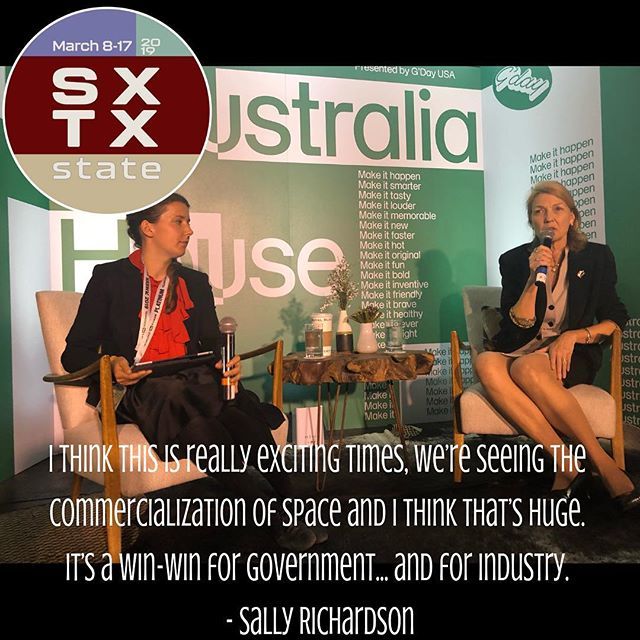
“I think this is really exciting times, we’re seeing the commercialization of space and I think that’s huge. It’s a win-win for government… and for industry.”
Sally Richardson of Northrop Grumman, a private aerospace and
Now here’s what’s on deck for the future: according to Jens, Europe is also launching a Mars ExoRover in 2020, while JPL is constructing an instrument that will take CO2 in Mars atmosphere and convert it to oxygen. Northrup Grumman is working on a Gateway lander similar to their original lunar model, while their Mission Extension Service is attaching jetpacks to existing satellites so as to reduce waste and extend the life of these satellites.
Kearney works at Johnson Space Center and is currently focused on the Orion spacecraft and lunar outpost Gateway. “We’re hoping to get our first module up in 2022, habitation space in 2024. Hopefully we see the first decent lander in 2024,” she said. Due to the length of the flights to Mars and deep space, she also expressed the importance of regenerative technologies to these missions, something that may not have been created yet.
Nye believes “the future is gonna be in, not all at once, methane. It’s not as dense, there’s not as much specific energy, it will enable launches to be cleaner.” Ever the optimist, he also stated, “The discoveries to be made on Mars (and its moons) will change the course of human history.”
Griffin agrees that “Mars is just a baby step.” He also pointed out the radiation problem that astronauts will have travelling to and from the Red Planet, and believes that water is the solution – perhaps having a system to convert the air to water and fill up the empty space between a double-walled hull over time, so there is less payload on takeoff.
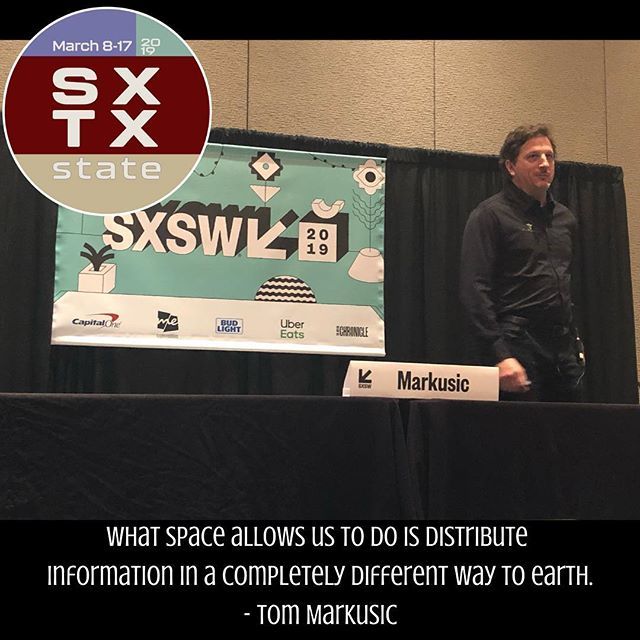
Tom Markusic of Austin-based Firefly Aerospace is committed to the next big thing: newspace. Newspace is “a private commercial approach to increasing access to and utilization of space, while dramatically lowering the cost of both.” His team is building multiple rockets intended for various payloads, and envisions the Firefly Gamma as a reusable rocketplane (kind of like a shuttle but for Earth travel) that can get anywhere on Earth in 90 minutes! While they have already been selected by NASA to deliver small payloads to the moon, they also aspire to offer the lowest price per kilo to space and “provide the world’s most economical and convenient small satellite launch services.”
Markusic credits
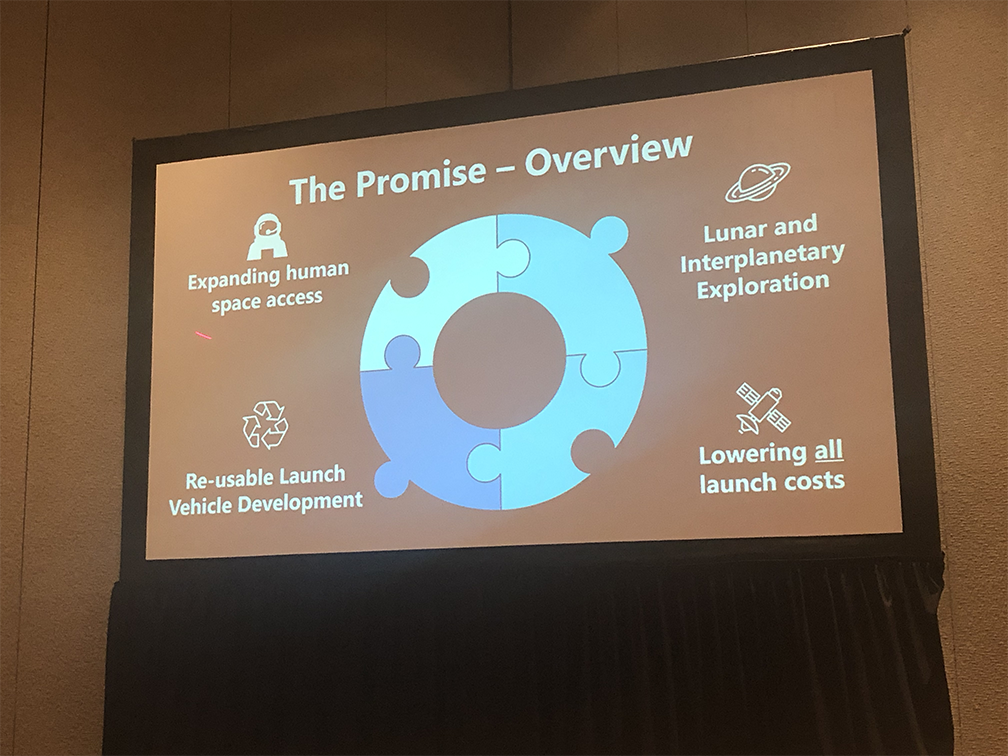
We can’t get there alone. Aerospace engineers and scientists don’t just fall into the field by accident. That’s where the women of Reach Out and Touch Space come in. The four women in this panel all work in outreach at NASA, ranging from being a Solar System Ambassador to hitting the highway with the Mars Roadshow. Alice Wesson said they “serve K to
“We can’t take people to Mars, so let’s bring Mars to them,” said Carolina Martinez. Heather Doyle of the Solar System Ambassadors said that in the 21 years the program has been around, 43,000 events have been held and 8.2 million people reached. That’s ridiculous numbers that cannot be achieved from stationary space
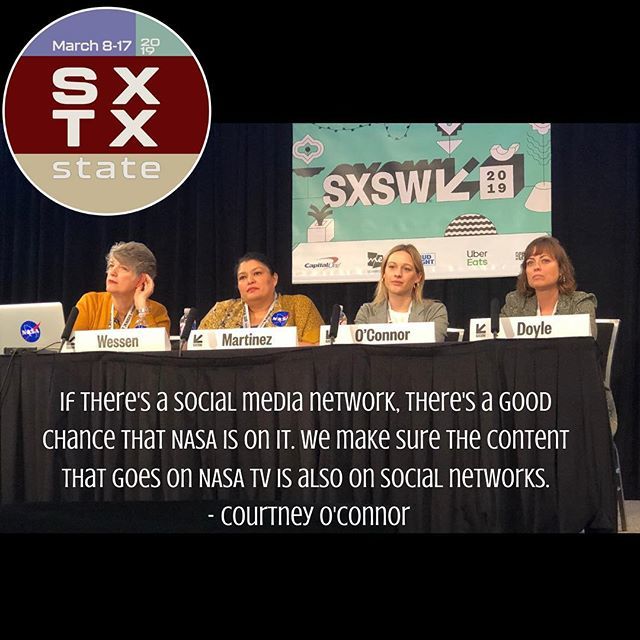
I think the primary takeaway from the week is that we as a society need to be incredibly invested in and excited about the future of space – travel, exploration, and eventually tourism and habitation. As Nye said, “Space exploration brings out the best in us!” And I think he’s absolutely correct.

Comments are closed, but trackbacks and pingbacks are open.